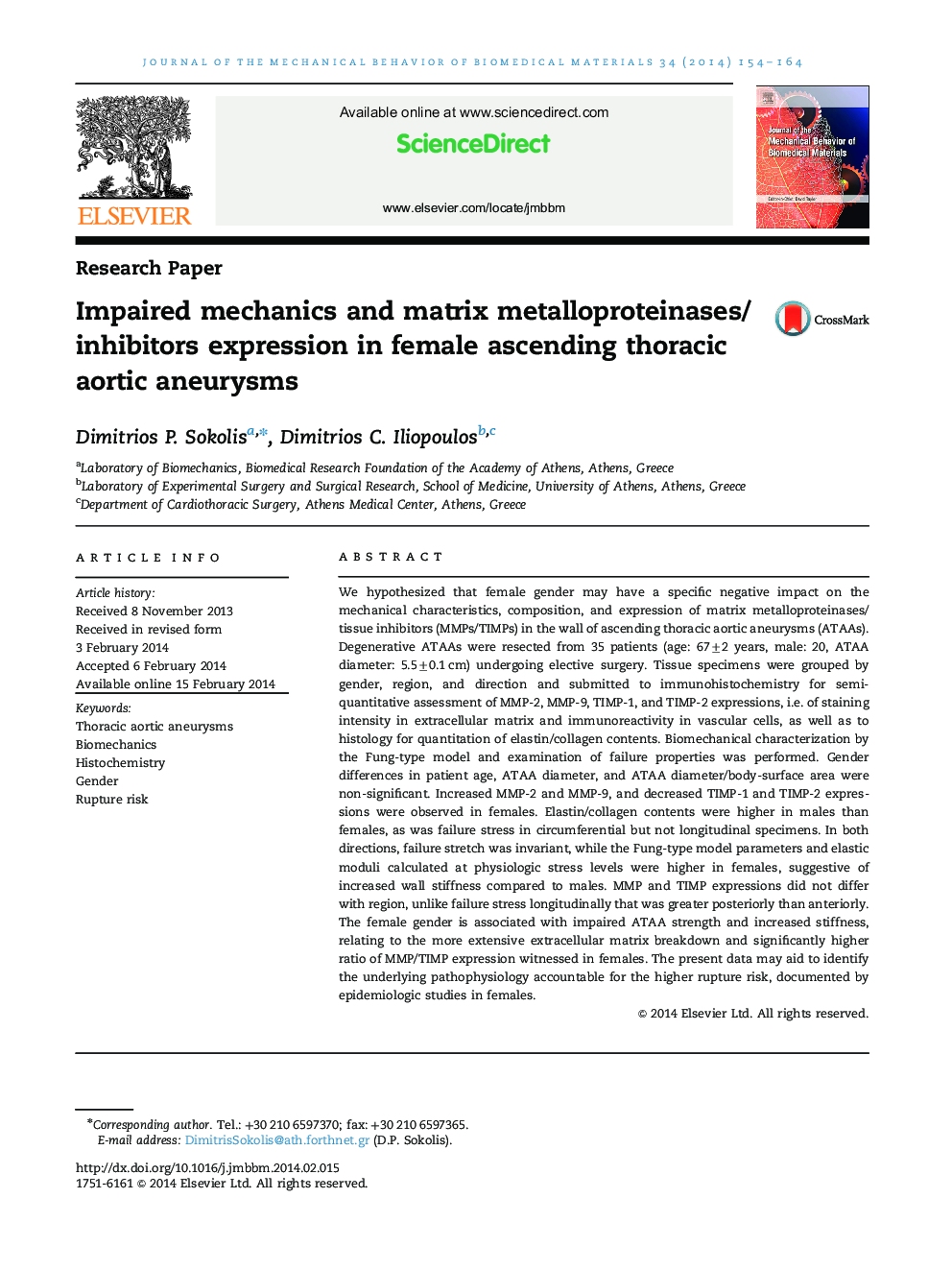| Article ID | Journal | Published Year | Pages | File Type |
|---|---|---|---|---|
| 810761 | Journal of the Mechanical Behavior of Biomedical Materials | 2014 | 11 Pages |
We hypothesized that female gender may have a specific negative impact on the mechanical characteristics, composition, and expression of matrix metalloproteinases/tissue inhibitors (MMPs/TIMPs) in the wall of ascending thoracic aortic aneurysms (ATAAs). Degenerative ATAAs were resected from 35 patients (age: 67±2 years, male: 20, ATAA diameter: 5.5±0.1 cm) undergoing elective surgery. Tissue specimens were grouped by gender, region, and direction and submitted to immunohistochemistry for semi-quantitative assessment of MMP-2, MMP-9, TIMP-1, and TIMP-2 expressions, i.e. of staining intensity in extracellular matrix and immunoreactivity in vascular cells, as well as to histology for quantitation of elastin/collagen contents. Biomechanical characterization by the Fung-type model and examination of failure properties was performed. Gender differences in patient age, ATAA diameter, and ATAA diameter/body-surface area were non-significant. Increased MMP-2 and MMP-9, and decreased TIMP-1 and TIMP-2 expressions were observed in females. Elastin/collagen contents were higher in males than females, as was failure stress in circumferential but not longitudinal specimens. In both directions, failure stretch was invariant, while the Fung-type model parameters and elastic moduli calculated at physiologic stress levels were higher in females, suggestive of increased wall stiffness compared to males. MMP and TIMP expressions did not differ with region, unlike failure stress longitudinally that was greater posteriorly than anteriorly. The female gender is associated with impaired ATAA strength and increased stiffness, relating to the more extensive extracellular matrix breakdown and significantly higher ratio of MMP/TIMP expression witnessed in females. The present data may aid to identify the underlying pathophysiology accountable for the higher rupture risk, documented by epidemiologic studies in females.
